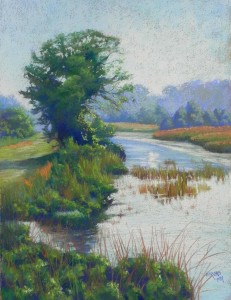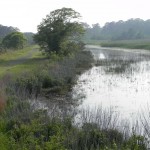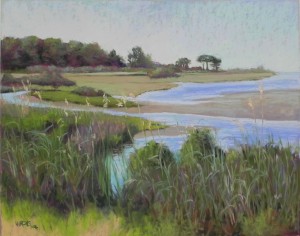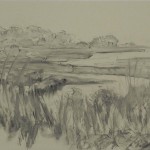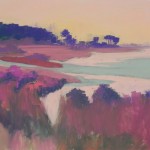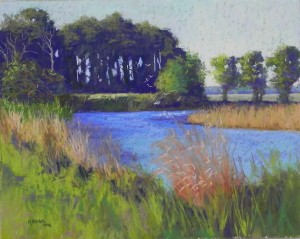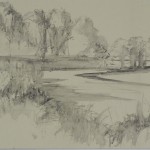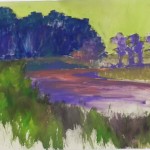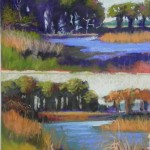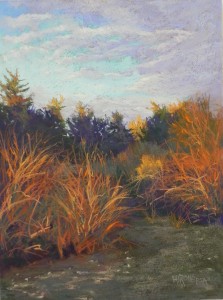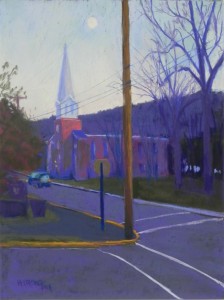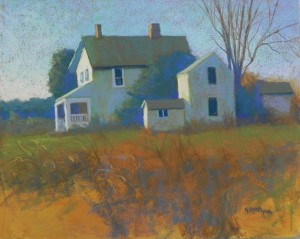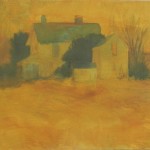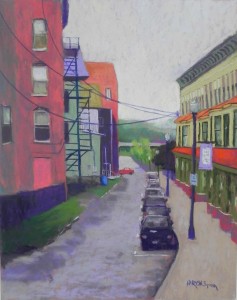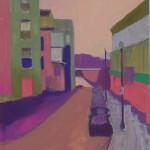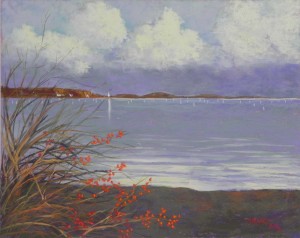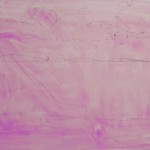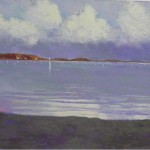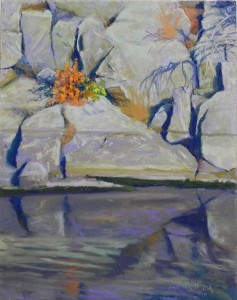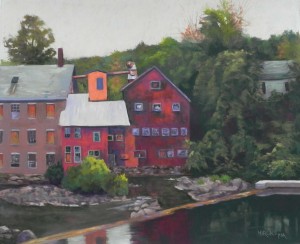Over the last two days I was in the studio from 10:00-4:00 for our twice yearly open studios weekend. I decided to do yet another Chincoteague picture (probably the last!). For this one, I decided that I wanted to work on a prepared surface and I toned and brushed Colourfix liquid primer on Rives printmaking paper. I liked the way the surface allowed me to use soft pastels to create various textures. As you can see, the color photo has very little color, so I printed it out in black and white and worked with a green/blue/orange color palette. When I lightened the photo, I could see that there were orange grasses on the left and some orange in the grasses at right.
As is typical, the sky and water were completely whited out in the photo. I decided to add more blue green to the sky, then added a light cool green and Ludwig very light orange. When doing the water, I added more blue greens into it to reflect the sky I had created, rather than what was in the photo.
The tree was a major challenge. It’s the most prominent feature of the picture and it was odd. I think that it had a vine on it that created a solid mass. At first I drew the tree too large, then got it to a more reasonable size, and I was quite pleased with the way that it turned out–better than the photo, I think.
I particularly liked the path to the left of the tree and the distant trees in haze. I use Ludwig blues and Blue Earth grayed greens. I actually used a lot of Blue Earth in this picture–most of the greens are from the green and turquoise sets. (I find that the “turquoise” is really just a cool green, which is very useful.)
The 24 by 18 shape is different from the wider reference photo and I much prefer it. Compositionally, what I really liked was the “S” shape of the darks beginning in the foreground and moving up to the tree.
I very much enjoyed doing this painting. And thanks Renata for the title!!!

